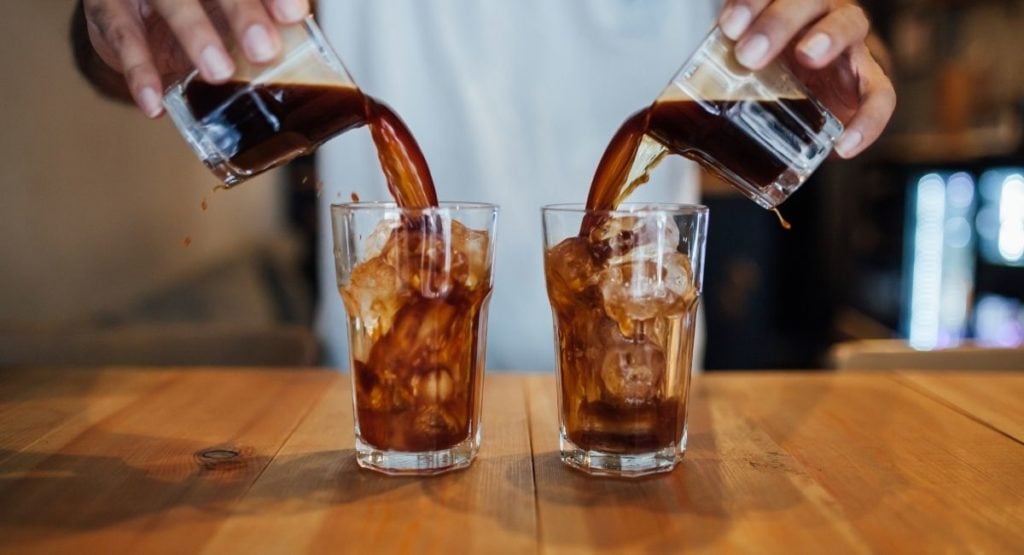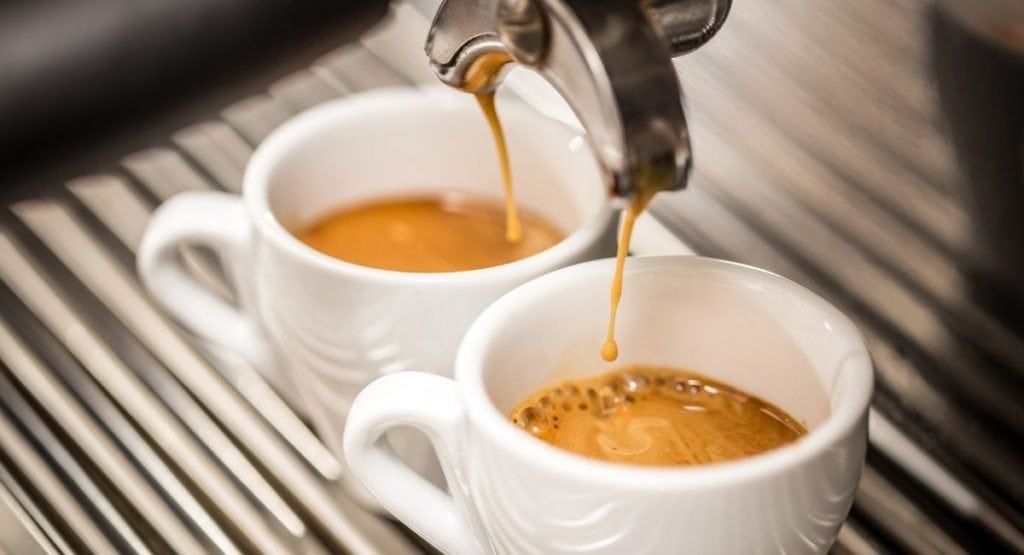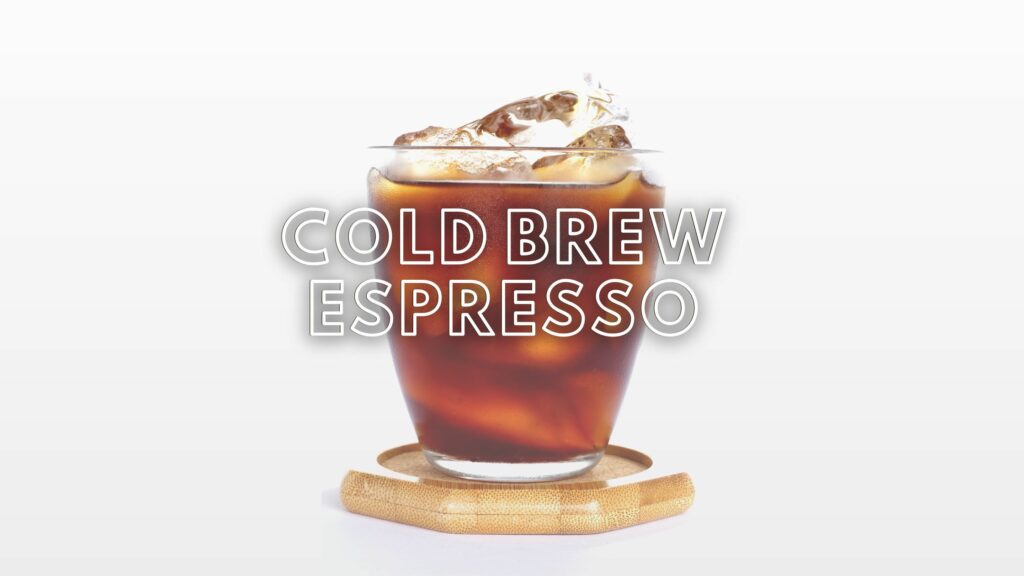Cold Brew vs. Espresso: What’s the Difference?
This post may contain affiliate links. If you make a purchase through a link I may earn a commission. As an Amazon affiliate I earn from qualifying purchases.
If you’ve only just started experimenting with different types of coffee and coffee recipes, you may be wondering what the difference is between cold brew and espresso. After all, they both can make a pretty strong cup of coffee.
What makes a cold brew different from espresso? And is one is better for you? Let’s find out!

What Is a Cold Brew?
The cold brew process involves soaking coarsely ground coffee beans at room temperature or with ice-cold water for 10 to 20 hours and then filtering it out to prepare a concentrated cold brew mixture.
This mixture can later be diluted with milk, ice, or water to create a delicious cup of coffee.
What Is an Espresso?
Espressos are typically served in smaller cups and prepared by manipulating heat and pressure to mix finely crushed coffee beans with hot water. Since espresso servings are typically small, they’re often called espresso shots.

Cold Brew vs. Espresso: What’s the Difference?
Now that we know what cold brew and espresso are, let’s dive into their differences.
1. Caffeine Content
Espresso has a much higher caffeine content than a regular cup of coffee. Typically, a single cup of espresso contains about 64 mg of caffeine per ounce, whereas a standard 16 oz cold brew contains 200 mg of caffeine, approximately 12.5 mg of caffeine per ounce.
Although cold brew’s caffeine amount surpasses several types of coffee, including cold coffee, nothing beats espresso if you are looking for a caffeine jolt.
2. Taste
Cold brewed coffee has a distinct, intense flavor. Due to its low acidity, its flavors range from chocolatey and nutty to even earthy — basically a mix of dark flavors. It also lacks the quintessential coffee smell that usually gives away its brewing method and type.
Espresso, on the other hand, has more defined and rich flavors. It has higher acidity than cold brew, but it’s well-balanced. It’s thick and creamy and comes with earthy, caramel undertones. The taste also includes a slight bitterness that usually hits your taste buds a few seconds after taking a sip.
3. Acidity
Speaking of coffee, acidity levels are directly proportional to heat and warmth. Since the cold brew method doesn’t employ any heat to release the flavors from coffee beans, it’s less acidic.
However, the two main components of brewing espresso are heat and pressure, making it slightly more acidic. The overall acidity also depends on the roast level — darker roasts make your coffee less acidic.
4. Water Temperature
Cold brew is usually made with room temperature water close to 68 degrees Fahrenheit (or cooler). The cold water slows down the extraction rate but also means that certain components of the coffee beans remain un-extracted. These components are only drawn out with heat.
Espresso is known for its strong caffeine and acidic content, and only an adequately powerful extraction can make a cup of coffee that strong. That’s why espresso is always made using hot water, which speeds up the extraction process by drawing every last bit of goodness from the coffee beans.
5. Grind Size
When making cold brew coffee, it’s always a good idea to stick to medium to coarse sized grounds. This prevents any fine residue from making an appearance at the bottom of your cup, but more importantly minimizes the surface area of the grounds. Because cold brew has longer extraction times, we want to compensate for surface area so we don’t end up over-extracting coffee. Cold brew can turn out bitter if it is over-extracted.
Read More: 4 Keys to Great Cold Brew Coffee
However, you should choose fine-sized coffee grounds when brewing espresso. Since espresso is prepared by forcing out water through the grounds, they need to be small enough to allow rapid extraction and produce a strong cup of coffee.
6. Brewing Process and Time
One of the most significant differences between cold brew and espresso is their brewing time. Since cold brew is prepared naturally by steeping coffee grounds in cold water, it usually takes about 10 to 20 hours for the extraction process to complete.
However, espresso is a machine-made beverage that takes only two minutes to prepare. Once you turn on the switch, the water immediately heats up and gushes through the coffee grounds into your cup, ready to serve.
7. Health Benefits
Both espresso and cold brew come with their own set of health benefits. Cold brew may have fewer antioxidant benefits than hot brewed coffee.
Overall, the basic health benefits of both coffees are more or less the same. However, cold brew may be more gentle on your digestive system than espresso.
If you are susceptible to caffeine, you may find cold brew preferable.
FAQs
Which Is Better, Espresso or Cold Brew?
This depends entirely on your personal preference, as it’s all about what you need and what drink meets your requirements better. If you want a quick cup of coffee on the go, espresso is what you should be looking at. But if you have enough time, make and enjoy a sweet cup of cold brew!
Can You Use Cold Brew Concentrate for Espresso?
Yes, you can substitute cold brew concentrate for espresso. Be sure to use a cold brew concentrate or follow our cold brew espresso recipe. There may be some minor flavor differences depending on what you are using the coffee for. For example, in a frappe you may taste the difference, but in a brownie recipe you may not notice the change at all.
Cold Brew vs. Espresso: Which Lasts Longer?
Cold brew lasts longer than espresso as hot brewing methods extract more coffee oils, which can go rancid more quickly. The latter must be made from scratch every time (although it doesn’t take much time). With cold brew, you can simply dilute a prepared concentrate or add ice cubes to enjoy a fresh cup of coffee in under 30 seconds.

